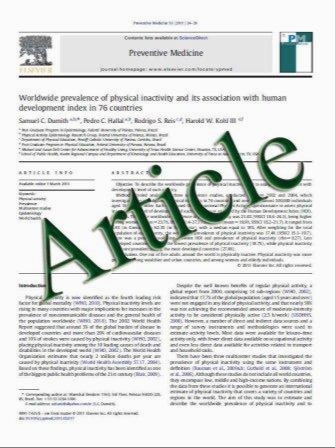Clinic and ultrasound findings related to pain in patients with knee osteoarthritis
- نوع فایل : کتاب
- زبان : انگلیسی
- مؤلف : Bakan Bedriye Mermerci & Yeim Garip & Ramadan Selma Uysal & Halil Doًruel & Erdem Karabulut & Kürat ضzoran & Hatice Bodur
- چاپ و سال / کشور: 2011
Description
The aim of this study was to determine clinical and US factors associated with pain in patients with knee osteoarthritis (OA). The study included 143 patients. Patients were divided into two groups: group 1 consisted of 94 patients with unilateral or bilateral knee pain .3 cm during physical activity for at least 48 h prior to inclusion, measured by the visual analog scale from 0 to 10 cm. Group 2 consisted of 49 patients with knee OAwithout knee pain at least 1 month prior to inclusion. In both knees, range of motion was measured by goniometry and anteroposterior, and lateral knee radiographs were taken during weight-bearing. OA grading was performed in accordance with the Kellgren.Lawrence criteria by a specialist in radiology experienced in this field. A knee ultrasound (US) examination was performed in all patients by a blinded radiologist. Women were more often symptomatic than men (p<0.005). Patients in group 1 tended to have a higher body mass index (BMI; p<0.001). Radiographic grades III (52.1%) and II (37.2%) were most frequently found in group 1, whereas I (30.6%), II (46.9%), and III (22.4%) were found in group 2. When radiographic grades in both groups were compared, group 1 had greater radiographic grades than group 2 (p<0.001). US findings in group 1 were effusion of the suprapatellar pouch (72.3%), Bakerپfs cyst (42.6%), protrusion of the anterior horn of the medial meniscus associated with medial collateral ligament displacement (9.6%), and loose body (9.6%). In group 2, the only US finding was Bakerپfs cyst (6.1%). Regression analysis revealed that BMI, degree of knee flexion, and thickness of the quadriceps tendon were factors that were related with pain in the knee. Increased BMI, decrease in the degree of knee flexion, and decreased quadriceps tendon thickness are factors that increase the risk of pain in knee OA.
Clin Rheumatol (2011) 30:1055–106 2Received: 11 February 2010 / Revised: 30 December 2010 / Accepted: 24 January 2011 / Published online: 26 February 2011


